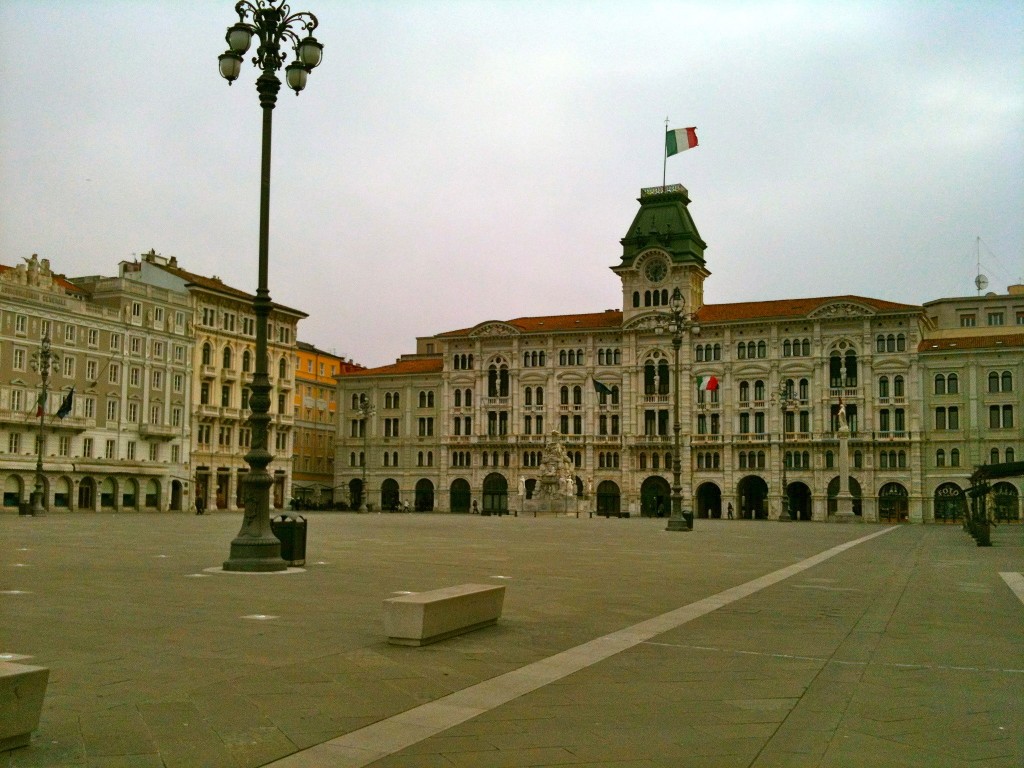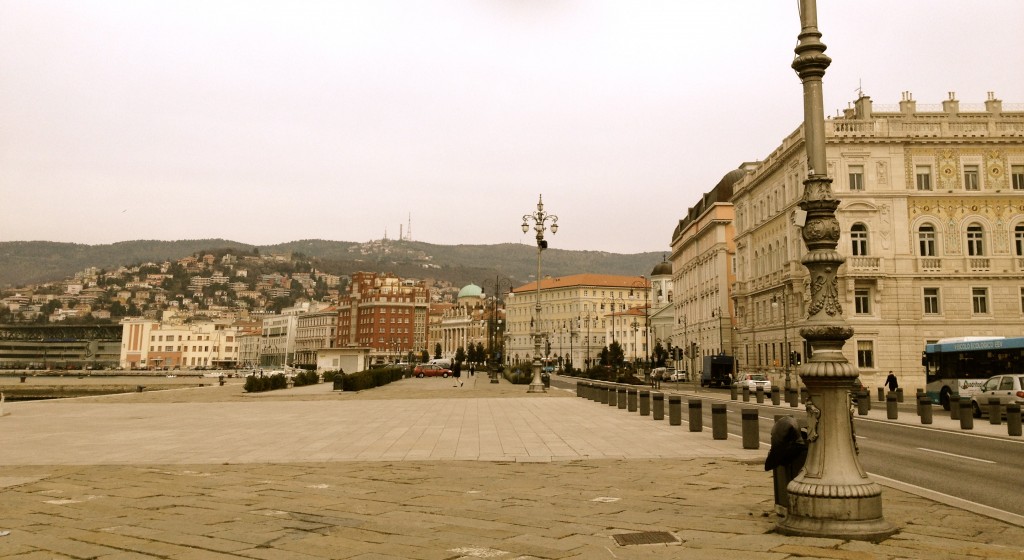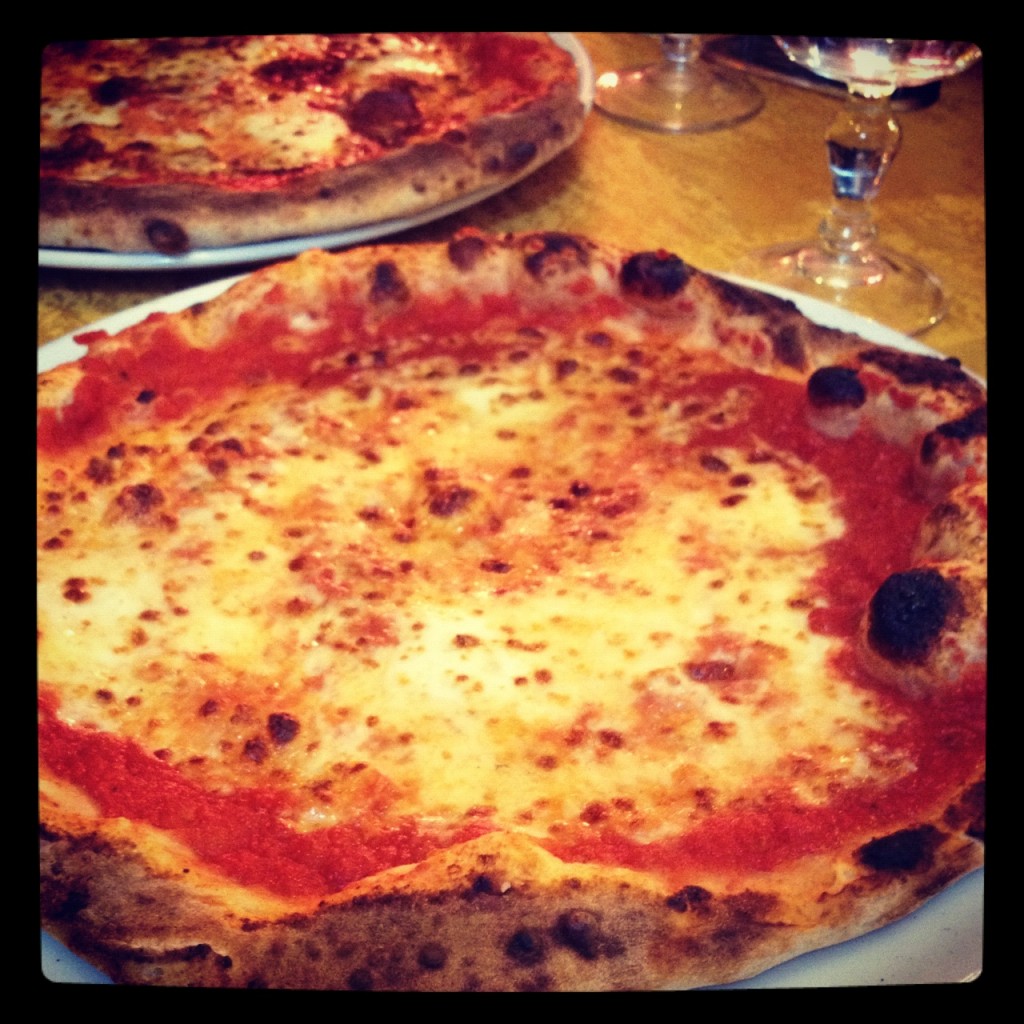I knew I would like Trieste from the minute the city tried to knock me over. I’m not a subtle person. I have always preferred my destinations to speak up to me bluntly, just as I would do in any situation. This northern Italian city is known for the bora, Italian for the strong, cold and dry northeast wind dizzying the Adriatic. These northern winds tend to plague the Adriatic in winter and this winter day was no different. Speeds have been known to get up to over 150 kilometers per hour. As I wait to cross the road to Piazza Unitá d’Italia, I hang on tight like a father in the passenger seat with his teen behind the wheel, fearful of falling into oncoming traffic. Trieste is far from restrained.
I manage to survive crossing the road to the center of Trieste. To get to know this blunt city, you must uncover its core, the very heart of its character. That heart beats in Piazza Unitá d’Italia. The main square is made up of imperial buildings on three of its sides, with the fourth side appropriately Trieste’s meeting with the sea. It is after all a vital part of the city’s heart. Trieste’s town hall features several Italian flags whipping in the wind. I know I’m not in Slovenia any more. The colors of green, white and red can’t help but spur an excitement in this Italian fiend.
A thriving port since Roman days, Trieste was given a neoclassical makeover by Maria Theresa of the Hapsburgs. The city has changed hands so many times, it can be difficult to keep score. At the end of the World War I, Trieste would become a piece of Italy. However the end of World War II would bring the occupation of Allied forces and Yugoslavia. It wasn’t given completely back to Italy until 1954. I’m thankful it was given back to Italy, a country I get cravings for when I travel.
If you can stand Trieste’s winds long enough to wander, you will notice a wealth of cafes. Those who holed up in corners penning works like A Portrait of the Artist as a Young Man and Dubliners made Café culture in this northern Italian city famous. James Joyce, Sigmund Freud and 20th century novelist Italo Svevo spent time in Trieste, just to name a few. When you have such a strong café culture, you obviously need a strong beverage. It is no wonder Illy coffee hails from Trieste, the very spot where founder Francesco Illy began mastering espresso in 1933.
On this bitingly cold winter day, I pop into the only open restaurant I can find. I came to Trieste for a purpose after all, to have pizza. When you are driving down from Slovenia to Croatia and you notice Trieste just sitting there in the middle of your journey, you can’t resist the urge to go for lunch, just because you can. In Trieste, I realized my cravings for Italy rock me to the core of my being, perhaps in part due to the bora. I hope to return again to Trieste. It is a city I knew only briefly and time I knew would not be enough.
Have you been to Trieste?




I wish I was there too! Love Italy!!! Never been to Trieste but would love to visit one day. That pizza looks yum!
Trieste is one of my favorite cities in Europe. My mother is Triestina; she and my father met and married there, and my oldest brother was born there as well. As a result, I have some background information I want to add about the “Occupation” of Trieste.
On May 2, 1949, my father arrived in Trieste as a member of the Trieste United States Troops (TRUST) “Occupation” force…but theirs was not a typical occupation task. At that time, Trieste and its environs were split into two zones, A and B; in an agreement after World War II, there was furious debate over who should receive control over the area, Italy or Yugoslavia.
While this debate raged on after WWII, American TRUST and British BETFOR troops were sent to serve as administrators of the city. The split between Zone A (Trieste proper) and Zone B (south of the city, in what was then northern Yugoslavia along the Istrian peninsual) was arranged along the Morgan Line.
The leader of Yugoslavia, the communist Marshal Tito, wanted to annex the city of Trieste as well, to go along with Zone B, which had already been ceded to him after WWII. My father and the rest of the TRUST troops were in charge of making sure that didn’t happen.
As I mentioned, while he was there, Dad met and married my mother. My oldest brother Roy was born in a military hospital in Trieste. At one point the shelling from Yugoslavia in the mountains around Trieste was so intense, the military dependents living in the city were on the verge of being evacuated by Navy ship. Thankfully, the battles ended and the evacuation never occurred.
I had cousins trapped behind the Morgan Line; they ended up, rather than Slovenian, as communist-dominated Yugoslavs. Theirs was a life of deprivation, of Soviet-era lack. I remember traveling across the border, the Yugoslav guards glaring at our passports in suspicion, machine guns at the ready. I remember the basic cement structure and plain, unadorned drywall interiors of the house my cousin Aldo was building in Koper-Capodistria, and how he lamented his ability to get his hands on and building materials. While we could come and go at will into Yugoslavia, my cousins were limited to only two trips into Italy per month, and were searched thoroughly when they came back for “contraband”.
After the breakup of Yugoslavia, I went back again to visit, and was shocked at the differences. No longer were there piles of rubble and the lack of supplies in and around Koper-Capodistria; Aldo now has a beautiful home, elegantly decorated and beautifully landscaped. He enthusiastically explained to me how President Clinton had recognized Slovenia as a sovereign nation, rescuing it from a 2-week war with Croatia and paving its entrance into democracy.
I have no doubt that, had TRUST and BETFOR not been in an administrative, protective position, the city of Trieste would have been annexed, and the same sorts of decline would have been seen there as were seen in Koper-Capodistria and elsewhere in Yugoslavia.
Mom says she will never forget the day the Americans came in and liberated the City. The New Zealanders came in the day before, but when the Americans came in, the city of Trieste turned out to cheer. No more Nazis on the street corners; no more Risiera concentration camp furnaces in their city; no more fear of a Nazi soldier coming to her door, demanding to see her father, who had already left the family and gone to fight in the Italian underground, rather than be conscripted to fight on the side of Mussolini and Hitler.
Who knew that one day Mom would become an American citizen, the mother of an American submariner and a National Guardsman?
I’m glad you’re in Trieste. Enjoy the city, make sure you see Castello di Miramare, and have some coffee for me as well.
Buon Giorno!
Such an interesting history. I was born in Trieste too – now live in Sydney Australia. Have just started a blog and Trieste gets a mention or two. Here it is: http://ambradambra.wordpress.com/
cheers
Ciao bella donna,
I was reading with interest your comments, as I was also born in Trieste.My father was in the British North Staffordshire Regiment and was posted there in 1945 with BETFOR. He met my mother,a local girl, and they married in Trieste in 1947.My father could not speak Italian and my mother could not speak English.Dad spent two years in a prison of war camp and my mother’s father was Austrian,…..they spoke German to each other.I was born in the British Military Hospital in 1950 and we stayed there until 1954 when partition occurred. The family was posted back to the UK and in 1956 we immigrated to Adelaide,South Australia.Mum and Dad are no longer with us ,however,they told me so many stories of Trieste that I have it firmly on my bucket list.
Regards….Joe Cotterill (jkc.2010@bigpond.com)
I love the look of the buildings. It looks gorgeous. <3
I love how you connected to the city through its wind, and that you stopped in Italy for lunch just because you could 🙂 That’s a great reason!
Hi Suzy. Liking your story. As a native of Friuli-Venezia Giulia (Trieste), always interested in hearing people’s experiences of being there. I live in Sydney, Australia and have just started a blog about all things Italian. Visit at your leisure, cheers
Ambra Sancin
http://ambradambra.wordpress.com/